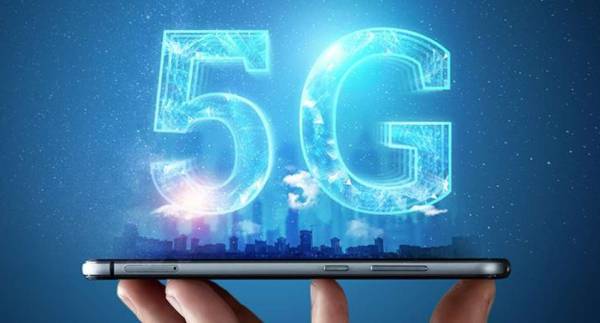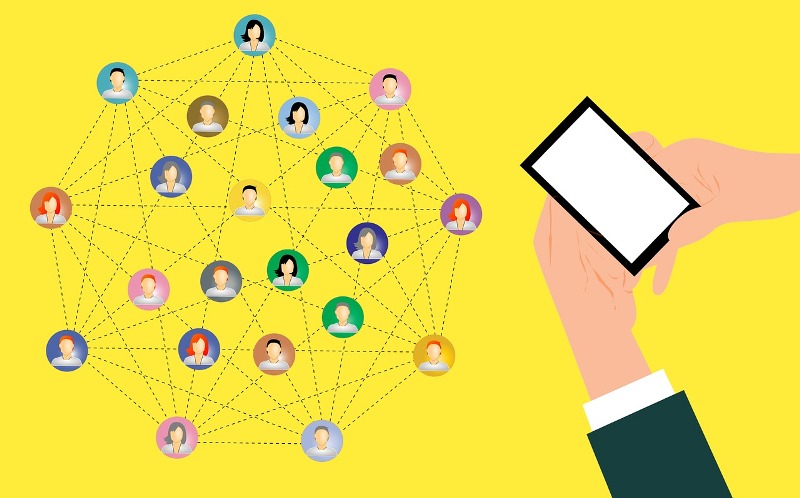Have you ever wondered how many people are using internet in the current world? Well, the number is humongous which is 4.9 billion! Most of our activities, from studying to shopping, are dependent on the internet. In fact, the internet has impact on both the demand side and supply side of an economy. Internet connectivity directly affects the production process in various firms. It is estimated that internet accounts for an average of 3.5 percentage of the GDP. Although, all this while the evolution of internet has been riveting. In this blog, let us discuss the journey of internet from 1G to 5G and find out the opportunities in 5G market-
1G to 5G: Evolution of Internet
We all know that internet cellular connectivity has evolved at a rapid pace from 1970s due to the rising demand for the high speed communications. The journey that started from 1G has reached up to 5G (fifth generation) technology for broadband cellular networks. Below written is the glance at what the past network generations were offering-
1. First Generation (1G) features
-1G powered the first mobile telephones using analog radio signals.
-Rendered an information transfer speed of up to 2.4 kilobytes (KB) per second
-1G offered a poor conversation security because of limited usage of the technology
-The quality of voice was also poor owing to the signal interference
2. Second Generation (2G) features
-2G services enabled text messages or short message service (SMS) & multimedia message service (MMS)
-Rendered an information transfer speed of up to 50 KB (kilobytes) per second
-Incorporated encrypted voice transmission which made voice calls secured
-2G also enabled its users to make calls outside the coverage area of the network which was called roaming
-Mobile telephones were powered with digital signals
3. Third Generation (3G) features
-Incorporated mobile applications and features of video calls, traversing a way to Apple iPhone 4’s face time
-Rendered a speed of 3 megabytes (MB) per second to provide information
-Map applications were possible and the location tracking support started
4. Fourth Generation (4G) features
-4G provided high definition of gaming and video streaming
-Rendered an information transfer speed of up to 36MB per second
-Refined and enhanced voice call quality thanks to LTE (long term evolution) technology
5. Fifth Generation (5G) features
-This is the latest technology in wireless network technology.
-Rendering a theoretical maximum information speed of 10 gigabits per second (Gb
|
Features |
1G |
2G |
3G |
4G |
5G |
|
Year of commencement |
1970/1984 |
1980/1999 |
1990/2002 |
2000/2010 |
2010/2015 |
|
Technology |
AMPS,TACS,NMT |
GSM |
WCDMA |
LTE,WiMax |
MIMO,mm Waves |
|
Frequency |
30 KHz |
1.8 Ghz |
1.6-2 Ghz |
2-8 GHz |
3-30 Ghz |
|
Bandwidth |
2kbps |
14.4-64 kbps |
2 Mbps |
2000 Mpbs to 1 Gbps |
1 Gbps and higher |
|
Access System |
FDMA |
TDMA/CDMA |
CDMA |
CDMA |
OFDM/BDMA |
|
Core Network |
PSTN |
PSTN |
Packet Network |
Internet |
Internet |
Let us now devour more into the latest generation of mobile technology that is 5G-
As mentioned above the fifth generation or 5G mobile network is the latest wireless standards following 1G, 2G, 3G and 4G networks. This fifth generation network is designed to connect virtually everything and everyone together including objects, machines, and devices. This ultra-modern technology is meant to render low latency, more reliability, higher multi-Gbps peak data speeds, increased availability and an excellent user experience.
You must be wondering; what technologies have been used to make 5G unparalleled and advanced? Well, to know that answer here is an easy explanation for you: -
Underlying technology in 5G
The fifth generation technology is based on the Orthogonal frequency-division multiplexing. The OFDM is a method of modulating digital signal across various different channels in order to attenuate interference. Furthermore, 5G utilizes some wider bandwidth technologies of around 6GHz mm Wave. This is designed to not only render better, faster broadband services but also can expand into new service areas. It also includes 5G NR which means 5G New Radio which is the standard for a unified and capable 5G wireless air interference. If we compare 5G vs 4G, 5G proves to be far better than 4G which is growing the 5G market size remarkably.
- 5G is more capable than 4G
- 5G is faster than 4G- 5G is capable of delivering 20 gigabits-per-second peak data rates
- 5G has exceptionally lower latency than 4G- 5G has remarkably lower latency which delivers real-time access with approximately ten times decrease in the end-to-end latency.
- 5G is a unified platform
- 5G utilizes spectrum much better than 4G- 5G is fabricated to get most of each bit of the spectrum across a wide array of the available spectrum.
Moreover, the 5G has 3 bands which are low, mid and high frequency spectrum. All these bands have their own usages and limitations: -
- Low band spectrum- Telecom companies can utilize this band for commercial cellphone users
- Mid band spectrum- This band offers higher speed than low band. Also, this band can be extensively used by industries and specialized factory units
- High band spectrum- It offers the maximum speed of all the three bands. Though it has very limited coverage and signal penetration strength
Owing to the supremacy of 5G in connectivity, the 5G market holds capability of driving the economic growth. The data given is the testimony that 5G market size is expecting to thrive-
- USD 13.1 trillion of global economic output
The pathway of the growth of sales in 5G is gradually reaching USD 13.1 trillion by the year 2035.
- Offering 22.8 million of new jobs
5G is generating enormous opportunities for jobs by the year 2035.
- USD 265 billion worldwide 5G CAPEX and marvellous R&D annually over the next 14 years
Moreover, the researchers are expecting that 5G will impact various industries.
Manufacturing
- 25%-30% potential overall productivity gains
- 45%-50% improvement in efficiency
- 22% increase in the asset life
- 91% detection of defect
Healthcare
- 31% saving in cost by transitioning remote-home based models
Automotive
- 81% reduction in accidents
- USD 3,5 billion savings in the repair cost
- 25% reduction in the traffic
Agriculture
- 30% decreased inputs and 20% decreased costs
- 15% increased crop yields
- Enhanced connectivity can lead up to 26% increased productivity
Moreover, 5G endeavours to deliver sustainable benefits to environment such as –
Dwindling emission: - The increased efficiency in 5G network equipment can help in reducing carbon emission caused from the mobile networks by 50% in the coming next years.
Shrinking pollution: - Herbicide usage can be reduced by using artificial intelligence. Also, 5G enabled intelligent transportation systems can lead to 16% less traffic resulting less pollution.
Escalating energy efficiency: - 5G enabled IoT devices are developed to have a longer battery
On the back of innumerable benefits rendered by 5G, its demand is increasing. The 5G technology has been introduced in various countries.
Below is the data of number cities where 5G is available in 2022
|
China |
356 |
|
United States |
296 |
|
Philippines |
99 |
|
South Korea |
84 |
|
Spain |
71 |
|
Italy |
65 |
|
Germany |
58 |
|
United Kingdom |
57 |
|
Saudi Arabia |
48 |
Moreover, countries such as Bhutan, Argentina, Kenya, Malaysia, Malta, and Mauritius are the countries where 5G has been newly launched. Analysts also suggest that global 5G market will remain in the mainstream in the coming time period. The top notch companies which are leading in the 5G network market are-
- Intel
- Samsung (USD 200 billion)
- Nokia
- Huawei
- Ericsson
- ZTE
- Qualcomm
- NEC
- AT&T (USD 171 billion)
- Cisco
In a nutshell,
Various countries are encouraging and boosting their local 5G hardware manufacturing companies. Hence it can be said that 5G market offers huge opportunities of growth in the future.









